Immunology/Inflammation
The immune and inflammation-related pathway including the Toll-like receptors pathway, the B cell receptor signaling pathway, the T cell receptor signaling pathway, etc.
Toll-like receptors (TLRs) play a central role in host cell recognition and responses to microbial pathogens. TLR4 initially recruits TIRAP and MyD88. MyD88 then recruits IRAKs, TRAF6, and the TAK1 complex, leading to early-stage activation of NF-κB and MAP kinases [1]. TLR4 is endocytosed and delivered to intracellular vesicles and forms a complex with TRAM and TRIF, which then recruits TRAF3 and the protein kinases TBK1 and IKKi. TBK1 and IKKi catalyze the phosphorylation of IRF3, leading to the expression of type I IFN [2].
BCR signaling is initiated through ligation of mIg under conditions that induce phosphorylation of the ITAMs in CD79, leading to the activation of Syk. Once Syk is activated, the BCR signal is transmitted via a series of proteins associated with the adaptor protein B-cell linker (Blnk, SLP-65). Blnk binds CD79a via non-ITAM tyrosines and is phosphorylated by Syk. Phospho-Blnk acts as a scaffold for the assembly of the other components, including Bruton’s tyrosine kinase (Btk), Vav 1, and phospholipase C-gamma 2 (PLCγ2) [3]. Following the assembly of the BCR-signalosome, GRB2 binds and activates the Ras-guanine exchange factor SOS, which in turn activates the small GTPase RAS. The original RAS signal is transmitted and amplified through the mitogen-activated protein kinase (MAPK) pathway, which including the serine/threonine-specific protein kinase RAF followed by MEK and extracellular signal related kinases ERK 1 and 2 [4]. After stimulation of BCR, CD19 is phosphorylated by Lyn. Phosphorylated CD19 activates PI3K by binding to the p85 subunit of PI3K and produce phosphatidylinositol-3,4,5-trisphosphate (PIP3) from PIP2, and PIP3 transmits signals downstream [5].
Central process of T cells responding to specific antigens is the binding of the T-cell receptor (TCR) to specific peptides bound to the major histocompatibility complex which expressed on antigen-presenting cells (APCs). Once TCR connected with its ligand, the ζ-chain–associated protein kinase 70 molecules (Zap-70) are recruited to the TCR-CD3 site and activated, resulting in an initiation of several signaling cascades. Once stimulation, Zap-70 forms complexes with several molecules including SLP-76; and a sequential protein kinase cascade is initiated, consisting of MAP kinase kinase kinase (MAP3K), MAP kinase kinase (MAPKK), and MAP kinase (MAPK) [6]. Two MAPK kinases, MKK4 and MKK7, have been reported to be the primary activators of JNK. MKK3, MKK4, and MKK6 are activators of P38 MAP kinase [7]. MAP kinase pathways are major pathways induced by TCR stimulation, and they play a key role in T-cell responses.
Phosphoinositide 3-kinase (PI3K) binds to the cytosolic domain of CD28, leading to conversion of PIP2 to PIP3, activation of PKB (Akt) and phosphoinositide-dependent kinase 1 (PDK1), and subsequent signaling transduction [8].
References
[1] Kawai T, Akira S. The role of pattern-recognition receptors in innate immunity: update on Toll-like receptors[J]. Nature immunology, 2010, 11(5): 373-384.
[2] Kawai T, Akira S. Toll-like receptors and their crosstalk with other innate receptors in infection and immunity[J]. Immunity, 2011, 34(5): 637-650.
[3] Packard T A, Cambier J C. B lymphocyte antigen receptor signaling: initiation, amplification, and regulation[J]. F1000Prime Rep, 2013, 5(40.10): 12703.
[4] Zhong Y, Byrd J C, Dubovsky J A. The B-cell receptor pathway: a critical component of healthy and malignant immune biology[C]//Seminars in hematology. WB Saunders, 2014, 51(3): 206-218.
[5] Baba Y, Matsumoto M, Kurosaki T. Calcium signaling in B cells: regulation of cytosolic Ca 2+ increase and its sensor molecules, STIM1 and STIM2[J]. Molecular immunology, 2014, 62(2): 339-343.
[6] Adachi K, Davis M M. T-cell receptor ligation induces distinct signaling pathways in naive vs. antigen-experienced T cells[J]. Proceedings of the National Academy of Sciences, 2011, 108(4): 1549-1554.
[7] Rincón M, Flavell R A, Davis R A. The Jnk and P38 MAP kinase signaling pathways in T cell–mediated immune responses[J]. Free Radical Biology and Medicine, 2000, 28(9): 1328-1337.
[8] Bashour K T, Gondarenko A, Chen H, et al. CD28 and CD3 have complementary roles in T-cell traction forces[J]. Proceedings of the National Academy of Sciences, 2014, 111(6): 2241-2246.
Targets for Immunology/Inflammation
- Cyclic GMP-AMP Synthase(1)
- Apoptosis(137)
- 5-Lipoxygenase(18)
- TLR(106)
- Papain(2)
- PGDS(1)
- PGE synthase(26)
- SIKs(10)
- IκB/IKK(83)
- AP-1(2)
- KEAP1-Nrf2(47)
- NOD1(1)
- NF-κB(265)
- Interleukin Related(129)
- 15-lipoxygenase(2)
- Others(10)
- Aryl Hydrocarbon Receptor(35)
- CD73(16)
- Complement System(46)
- Galectin(30)
- IFNAR(19)
- NO Synthase(78)
- NOD-like Receptor (NLR)(37)
- STING(84)
- Reactive Oxygen Species(434)
- FKBP(14)
- eNOS(4)
- iNOS(24)
- nNOS(21)
- Glutathione(37)
- Adaptive Immunity(144)
- Allergy(129)
- Arthritis(25)
- Autoimmunity(134)
- Gastric Disease(64)
- Immunosuppressants(27)
- Immunotherapeutics(3)
- Innate Immunity(411)
- Pulmonary Diseases(76)
- Reactive Nitrogen Species(43)
- Specialized Pro-Resolving Mediators(42)
- Reactive Sulfur Species(24)
Products for Immunology/Inflammation
- Cat.No. 상품명 정보
-
GC18655
3-hydroxy Decanoic Acid methyl ester
3-hydroxy Decanoic acid methyl ester is a hydroxylated fatty acid methyl ester that has been found in methyl-branched poly(3-hydroxyalkanoate) (PHA) polymers produced by P.
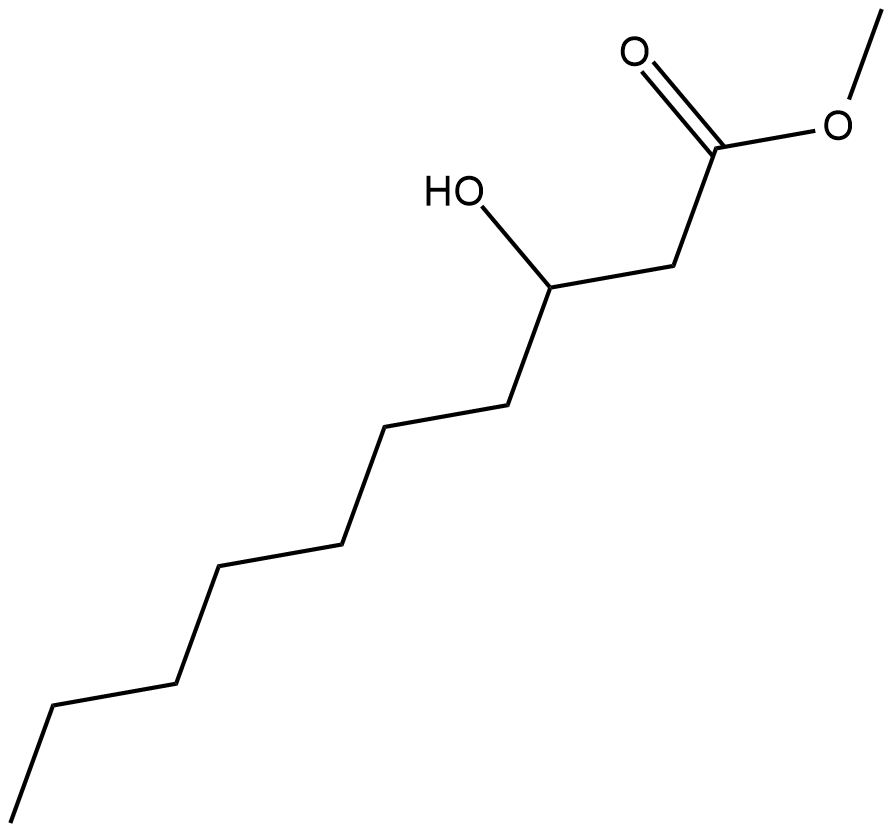
-
GC42275
3-hydroxy Desloratidine
3-hydroxy Desloratidine is a major metabolite of desloratadine , a tricyclic antagonist of the histamine H1 receptor.

-
GC42276
3-hydroxy Docosanoic Acid
3-hydroxy Docosanoic acid is a hydroxylated form of the 22-carbon saturated docosanoic acid.

-
GC45774
3-hydroxy Heptadecanoic Acid
A hydroxy fatty acid

-
GC40474
3-hydroxy Lignoceric Acid
3-hydroxy Lignoceric acid is a hydroxylated form of the 24-carbon saturated lignoceric acid.

-
GC49847
3-hydroxy methyl Cefuroxime
3-하이드록시 메틸 세푸록심은 세푸록심의 분해 산물입니다.

-
GC42280
3-hydroxy Myristic Acid methyl ester
3-hydroxy Myristic acid methyl ester is a hydroxylated fatty acid methyl ester that has been found in E.

-
GC42281
3-hydroxy Palmitic Acid
3-hydroxy Palmitic acid is a form of the 16:0 lipid palmitic acid.

-
GC42282
3-hydroxy Palmitic Acid methyl ester
3-hydroxy Palmitic acid methyl ester (3-hydroxy PAME) is an esterized long-chain fatty acid involved in quorum sensing in R.

-
GC42286
3-hydroxy Stearic Acid
3-hydroxy Stearic acid is a long-chain saturated fatty acid and intermediate in the production of 3-hydroxy octadecanedioic acid from stearic acid.

-
GC42288
3-hydroxy Tridecanoic Acid
3-hydroxy Tridecanoic acid is a 13-carbon saturated fatty acid found in bacterial lipopolysaccharides (LPS).

-
GC49819
3-Hydroxy-4-methyl-2(5H)-thiophenone
A degradation product of cefaclor

-
GC45336
3-hydroxy-DL-Kynurenine
트립토판의 대사산물인 3-하이드록시-DL-키누레닌은 잠재적인 내인성 신경독이며, 그 수치가 여러 신경퇴행성 장애에서 설명된 바 있습니다.

-
GC49364
3-Hydroxycoumarin
3-하이드록시쿠마린은 인간 15-LOX-1의 강력한 산화환원 억제제입니다.

-
GC45337
3-Hydroxyterphenyllin
3-Hydroxyterphenyllin은 Aspergillus candidus의 대사산물입니다. 3-Hydroxyterphenyllin은 증식을 억제하고 A2780/CP70 및 OVCAR-3 세포에 대한 세포독성을 유발합니다. 3-Hydroxyterphenyllin은 S기 정지 및 세포 사멸을 유도합니다. 3-Hydroxyterphenyllin은 난소암 연구의 잠재력이 있습니다.

-
GC31290
3-Indolepropionic acid
3-인돌프로피온산은 강력한 항산화제로 알려져 있으며 알츠하이머병 치료에 잠재력이 있습니다.
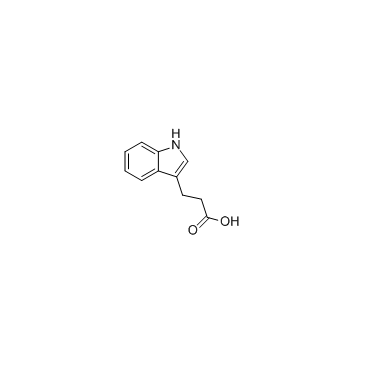
-
GC48457
3-keto Fusidic Acid
An active metabolite of fusidic acid

-
GC64630
3-O-Acetyl-α-boswellic acid
3-O-아세틸-α-보스웰산은 T 세포 기능을 억제합니다.
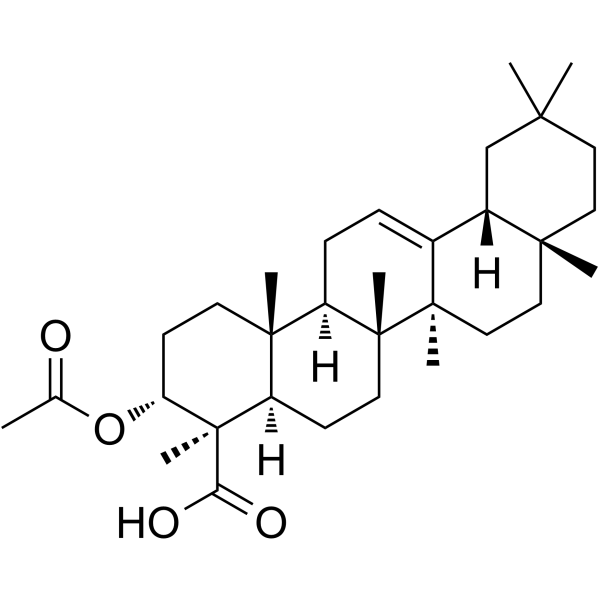
-
GC48488
3-Oxobetulin Acetate
A derivative of betulin

-
GC40692
3-Propylxanthine
3-프로필크산틴은 Ki가 7 μ인 선택적이고 경쟁적인 A2B 수용체 길항제로 작용합니다.

-
GC45354
4β-Hydroxywithanolide E
4β, Physalis peruviana L.에서 분리된 하이드록시위타놀라이드 E.

-
GC48437
4'-Acetyl Chrysomycin A
A bacterial metabolite with antibacterial and anticancer activities

-
GC42406
4'-hydroxy Chalcone
4'-하이드록시 찰콘은 감초 뿌리에서 분리된 찰콘으로 간 보호 활성이 있습니다.

-
GC18527
4'-hydroxy Flurbiprofen
A major active metabolite of flurbiprofen
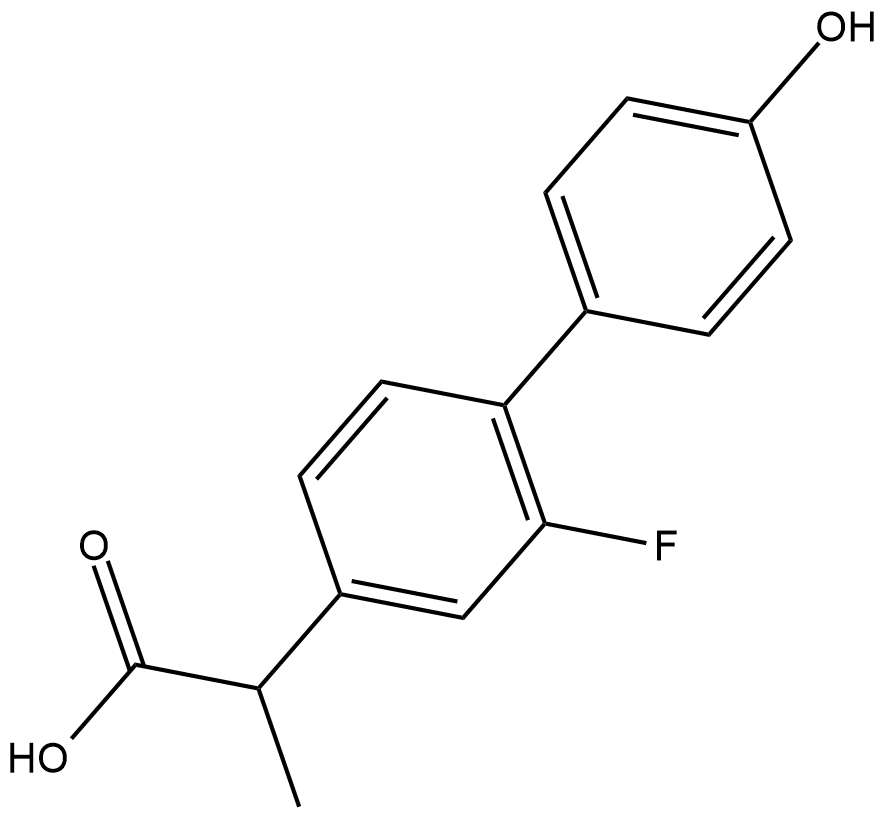
-
GC46608
4-(N-Boc-amino)piperidine
An organic building block

-
GC46609
4-(Phenylcarbonyl)benzoic Acid
A photooxidant

-
GC49337
4-Acetamidobenzenesulfonamide
A metabolite of asulam and sulfanilamide

-
GC42338
4-Aminobenzoic Acid hydrazide
4-Aminobenzoic Acid hydrazide는 IC50이 0.3 μ인 비가역적 MPO myeloperoxidase 억제제입니다.

-
GC42351
4-carboxy TEMPO
4-carboxy TEMPO is a nitroxide and spin label.

-
GC46630
4-CPPC
A MIF-2 inhibitor

-
GC42369
4-Deoxypyridoxine (hydrochloride)
4-Deoxypyridoxine (4-DPD) is a vitamin B6 antimetabolite with diverse biological activities.

-
GC42373
4-epi Minocycline
4-epi Minocycline is the main degradation product of and a potential impurity in commercial preparations of minocycline.

-
GC42374
4-epi-Chlortetracycline (hydrochloride)
Chlortetracycline is an analog of tetracycline, a broad spectrum antibiotic.

-
GC42401
4-hydroperoxy Cyclophosphamide
사이클로포스파미드의 활성화된 아날로그

-
GC18858
4-hydroxy Alternariol
4-hydroxy Alternariol is a metabolite of the mycotoxin alternariol formed through cytochrome P450 (CYP450) metabolism.
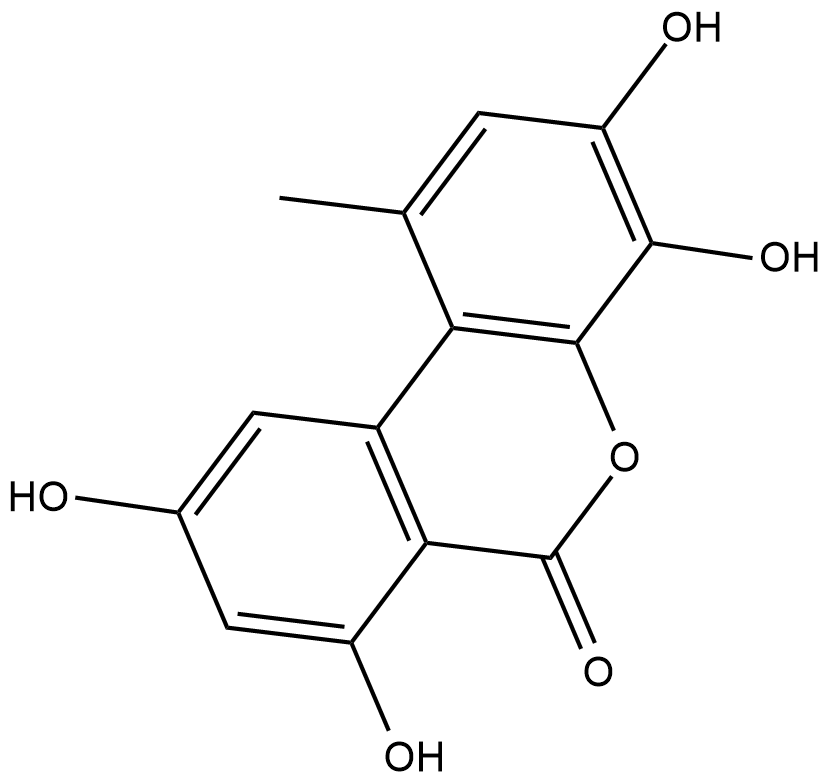
-
GC49575
4-hydroxy Omeprazole sulfide
A metabolite of omeprazole

-
GA20418
4-Hydroxy-hippuric acid
Polyphenol metabolite.

-
GC38663
4-Hydroxychalcone
4-Hydroxychalcone은 항혈관신생 및 항염 작용을 하는 찰콘 대사산물입니다.
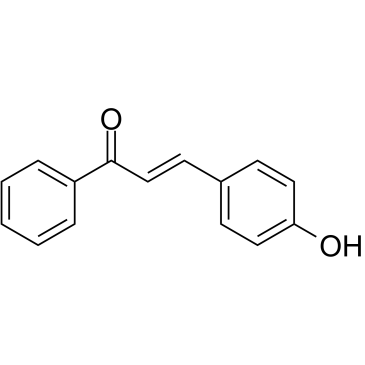
-
GC33815
4-Hydroxyphenylacetic acid
4-하이드록시페닐아세트산은 폴리페놀의 주요 미생물 유래 대사산물이며 항산화 작용에 관여합니다.
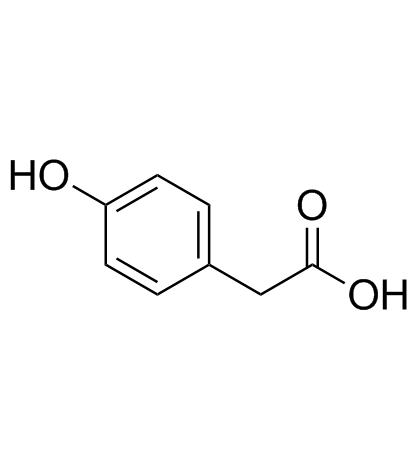
-
GC18853
4-isocyanato TEMPO
4-isocyanato TEMPO is a spin labeling reagent used to label the 2'-position in RNA.
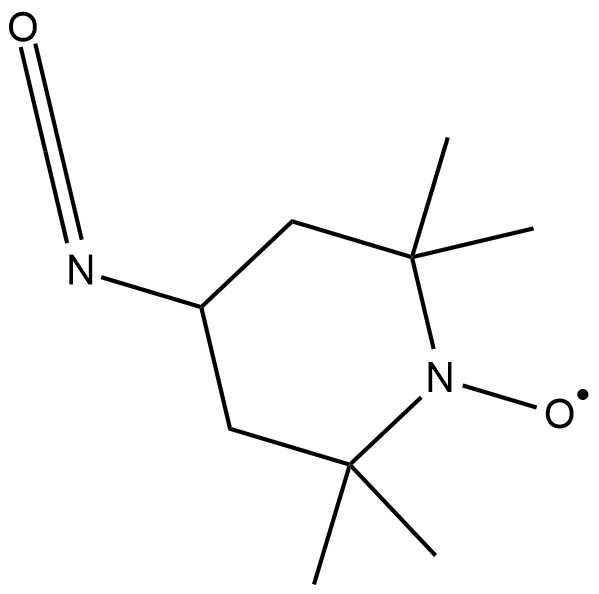
-
GC41299
4-Methylumbelliferyl Caprylate
4-Methylumbelliferyl caprylate (MUCAP) is a fluorogenic substrate for C8 esterase.

-
GC42448
4-Methylumbelliferyl-N-acetyl-α-D-Neuraminic Acid (sodium salt)
4-메틸움벨리페릴-N-아세틸-α-D-뉴라민산(나트륨염)은 뉴라미니다제 활성 분석에 사용되는 형광 기질입니다.

-
GC42461
4-Nitrophenyl β-D-Cellobioside
4-Nitrophenyl β-D-cellobioside is a disaccharide and an enzyme substrate.

-
GC46672
4-Nitrophenyl Palmitate
A colorimetric lipase and esterase substrate

-
GC35143
4-O-Methyl honokiol
4-O-Methyl honokiol은 목련(Magnolia officinalis)에서 분리된 천연 네오리그난으로 PPARγ 작용제 및 암 및 염증 연구에 사용되는 NF-κB 활성을 억제합니다.
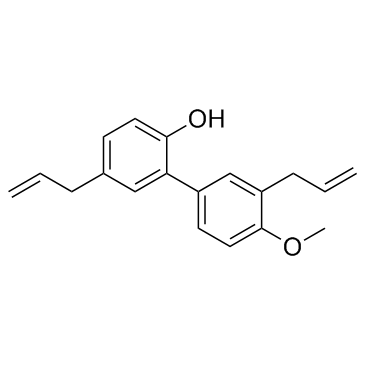
-
GC31648
4-Octyl Itaconate
4-옥틸 이타콘산 (4-OI)은 세포막 침투성을 가진 이타콘산 유도체입니다. 이타콘산과 4-옥틸 이타콘산은 비슷한 티올 반응성을 보이므로, 생물학적 기능 연구를 위해 적절한 이타콘산 대용체인 4-옥틸 이타콘산입니다.
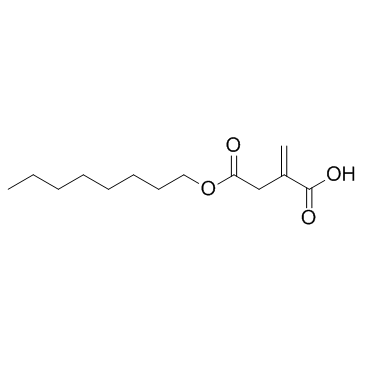
-
GC46673
4-octynyl Itaconate
4-옥티닐 Itaconate(ITalk)는 살아있는 세포에서 Itaconation의 정량적 및 부위 특이적 화학단백체 프로파일링을 위한 특정 생체 직교 프로브입니다.

-
GC49127
4-oxo Cyclophosphamide
An inactive metabolite of cyclophosphamide

-
GC49244
4-oxo Isotretinoin
An active metabolite of isotretinoin

-
GC40477
4-Thiouracil
4-Thiouracil is a site-specific, photoactivatable probe used to detect RNA structures and nucleic acid-nucleic acid contacts.

-
GC18582
5'-hydroxy Meloxicam
A metabolite of meloxicam
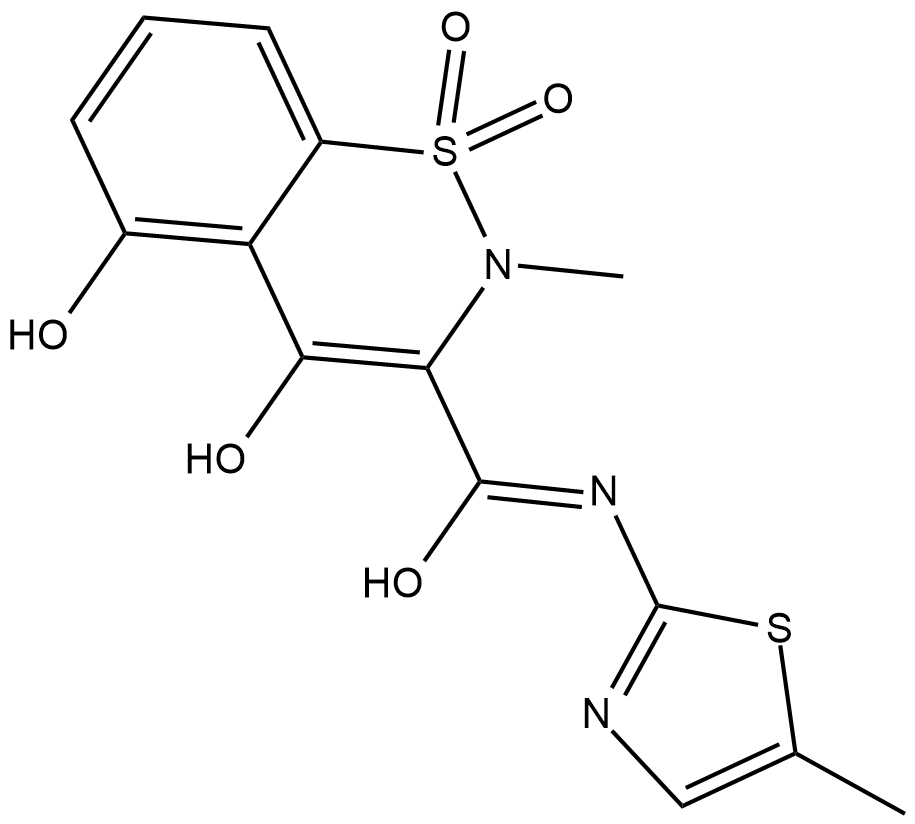
-
GC48381
5'-pApA (sodium salt)
A linearized form of cyclic di-AMP

-
GC48375
5'-pGpG (sodium salt)
A linearized form of cyclic di-GMP

-
GC49339
5(6)-Carboxy-2′,7′-dichlorofluorescein diacetate
5(6)-Carboxy-&2#8242;,7′-디클로로플루오레세인 디아세테이트는 세포 투과성 형광 지시약입니다.

-
GC41126
5(S),12(S)-DiHETE
5(S),12(S)-DiHETE is a natural bioactive lipid derived from arachidonic acid.
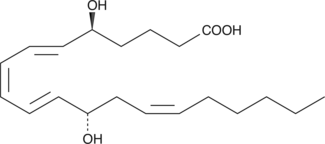
-
GC41127
5(S),15(S)-DiHETE
5(S),15(S)-DiHETE는 \5(S),15(S)-DiHETE is an “activated” intermediate, inhibits platelet aggregation with an IC50 of 1.3 μM.en_ko_2021q1.md
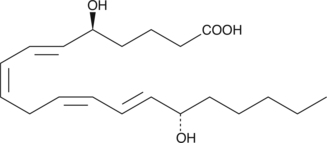
-
GC40782
5(Z),11(Z),14(Z)-Eicosatrienoic Acid
5(Z),11(Z),14(Z)-Eicosatrienoic acid is a polyunsaturated fatty acid found in various natural sources including maritime pine (Pinus pinaster) seed oil (MPSO), gymnospermae leaves and seeds, and freshwater gastropods.

-
GC46075
5,6-dimethyl-2-Thiouracil
A heterocyclic building block

-
GC48815
5,7,8-Trimethoxydictamnine
A quinoline alkaloid with antimalarial activity

-
GC52091
5,7-Dichlorothiazolo[5,4-d]pyrimidine
A building block
![5,7-Dichlorothiazolo[5,4-d]pyrimidine Chemical Structure 5,7-Dichlorothiazolo[5,4-d]pyrimidine Chemical Structure](/media/struct/GC5/GC52091.png)
-
GC52227
5-(3',4'-Dihydroxyphenyl)-γ-Valerolactone
An active metabolite of various polyphenols

-
GC40527
5-(Hydroxymethyl)-2'-deoxyuridine
5-(Hydroxymethyl)-2'-deoxyuridine is a nucleoside analog with anticancer and antiviral activities.

-
GC52413
5-Aminosalicylic Acid-d7
An internal standard for the quantification of 5-aminosalicylic acid

-
GC49827
5-Androstenetriol
An active metabolite of DHEA

-
GC45357
5-Chlorouracil

-
GC49233
5-Feruloylquinic Acid
5-FQA(5-Feruloylquinic acid)는 항산화 효과와 티로시나아제 억제 활성을 가지고 있습니다.

-
GC39760
5-Galloylquinic acid
5-갈로일퀸산, 녹차의 활성산소종(ROS) 제거제.
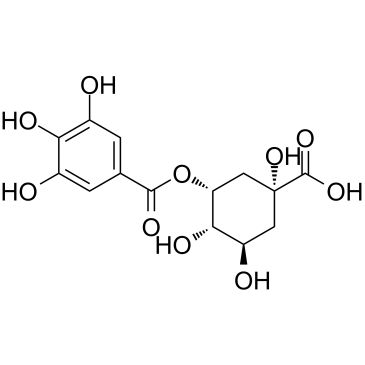
-
GC46033
5-Heneicosylresorcinol
An alkylresorcinol

-
GC42549
5-hydroxy Thiabendazole
5-hydroxy Thiabendazole (5-OH TBZ) is a major metabolite of the anthelmintic thiabendazole.

-
GC61638
5-Hydroxyoxindole
5-Hydroxyoxindole은 요산의 구조적 유사체입니다.
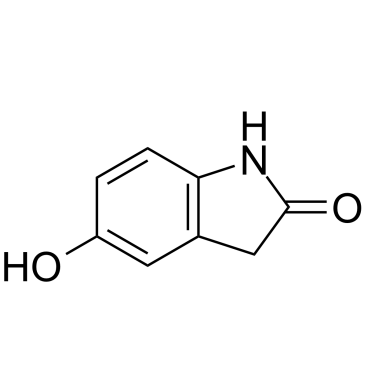
-
GC46705
5-Methoxycanthinone
5-Methoxycanthinone은 Leishmania 균주의 경구 활성 억제제입니다.

-
GC40380
5-OxoETE
5-OxoETE is a polyunsaturated keto acid formed by the oxidation of 5-HETE in human neutrophils by a specific dehydrogenase.

-
GC46712
5-Phenyllevulinic Acid
A fungal metabolite

-
GC46079
5-Tricosylresorcinol
5-Tricosylresorcinolthe는 첫 번째 낭포 지질입니다.

-
GC49676
6β-hydroxy Budesonide
A metabolite of budesonide
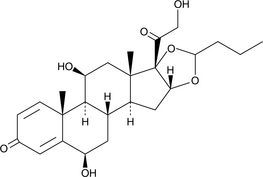
-
GC49629
6β-hydroxy Prednisolone
A metabolite of prednisolone

-
GC19536
6'-Sialyllactose Sodium Salt
6'-우유한 우유 올리고당인 시알릴락토스(나트륨)는 인간의 폐세포에서 녹농균의 내재화를 감소시킵니다.

-
GC45772
6(5H)-Phenanthridinone
An inhibitor of PARP1 and 2

-
GC41424
6(S)-Lipoxin A4
The lipoxins are trihydroxy fatty acids containing a 7,9,11,13-conjugated tetraene.

-
GC46721
6-Chloro-2-fluoropurine
A heterocyclic building block

-
GC49551
6-Chloropurine Riboside
A nucleoside precursor

-
GC49749
6-Deoxypenciclovir
An inactive metabolite of famciclovir

-
GC45955
6-Ethyl-2,7-dimethoxyjuglone
6-에틸-2,7-디메톡시주글론은 담수진균에서 분리된 대사산물입니다.

-
GC46724
6-Hydroxypyridin-3-ylboronic Acid
A heterocyclic building block

-
GC49235
6-Methylmercaptopurine
A metabolite of 6-mercaptopurine

-
GC49488
6-Methylmercaptopurine-d3
An internal standard for the quantification of 6-MMP

-
GC49864
6-Methylpterin
A derivative of folic acid
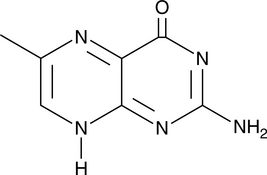
-
GC45715
6-Prenylindole
A bacterial metabolite

-
GC18776
6α-hydroxy Cholesterol
6α-hydroxy Cholesterol is an oxysterol that increases superoxide anion production in SK-N-BE cells when used at concentrations of 50 and 100 μM.
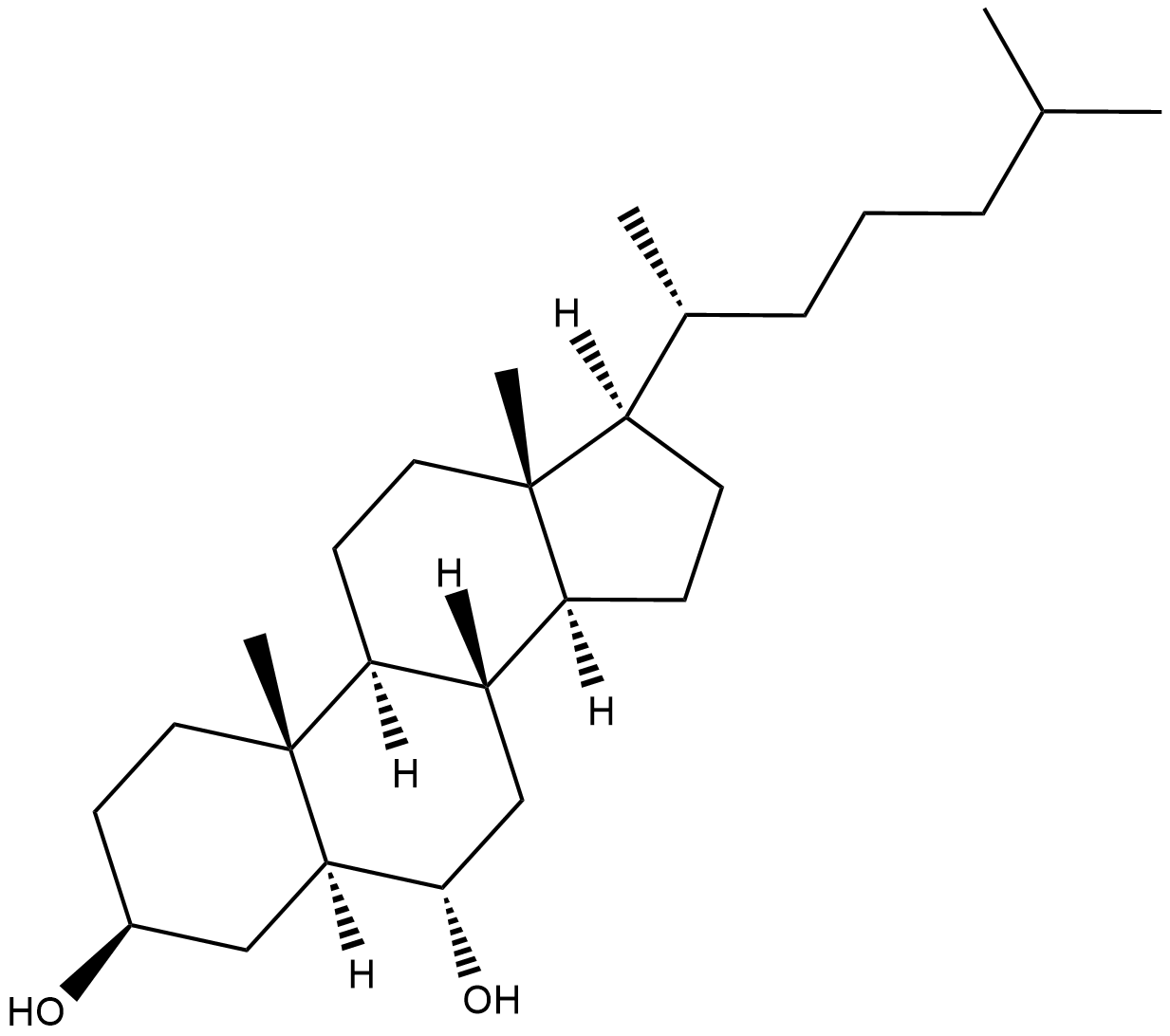
-
GC40202
7α-hydroxy Cholesterol-d7
7α-hydroxy Cholesterol-d7 is intended for use as an internal standard for the quantification of 7α-hydroxy cholesterol by GC- or LC-MS.

-
GC49206
7α-hydroxy Dehydroepiandrosterone
An active metabolite of dehydroepiandrosterone

-
GC46740
7β,27-dihydroxy Cholesterol
An oxysterol and agonist of RORγ and RORγt

-
GC52471
7(S),10(S)-DiHOME
An antibacterial hydroxy fatty acid

-
GC46732
7(S),17(S)-dihydroxy-8(E),10(Z),13(Z),15(E),19(Z)-Docosapentaenoic Acid
A metabolite of DPA with antiinflammatory properties

-
GC48769
7,10-dihydroxy-8(E)-Octadecenoic Acid
An antibacterial hydroxy fatty acid

-
GC46733
7,12-Dimethylbenz[a]anthracene
7,12-Dimethylbenz[a]anthracene은 다환 방향족 탄화수소(PAH)로서 발암 활성이 있습니다. 7,12-디메틸벤즈[a]안트라센은 다양한 설치류 모델에서 종양 형성을 유도하는 데 사용됩니다.
![7,12-Dimethylbenz[a]anthracene Chemical Structure 7,12-Dimethylbenz[a]anthracene Chemical Structure](/media/struct/GC4/GC46733.png)
-
GC35184
7,3',4'-Tri-O-methylluteolin
플라보노이드 화합물인 7,3',4'-Tri-O-methylluteolin(5-Hydroxy-3',4',7-trimethoxyflavone)은 염증 매개체, NO, PGE2 및 전염증성 사이토카인의 방출.
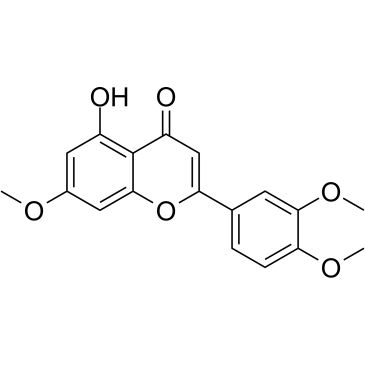
-
GC46080
7,3',4'-Trihydroxyflavone
7,3',4'-Trihydroxyflavone은 넓은 콩 꼬투리에서 분리된 플라보노이드 아글리콘 화합물입니다.

-
GC35185
7,4'-Dihydroxyflavone
7,4'-Dihydroxyflavone(7,4'-DHF)은 eotaxin/CCL11 억제제인 Glycyrrhiza uralensis에서 분리된 플라보노이드로 지속적으로 eotaxin 생산을 억제하고 dexamethasone(Dex)-이오탁신 생산에 대한 역설적인 부작용을 예방하는 능력이 있습니다. 1].
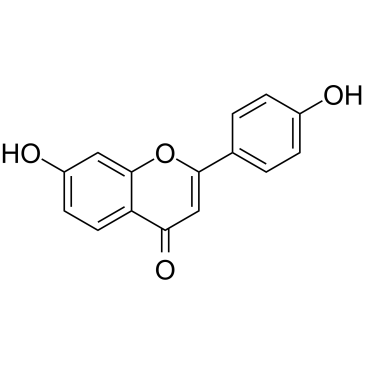
-
GC45673
7,8-Dihydroneopterin
염증 마커인 7,8-디히드로네옵테린은 산화질소 합성효소(iNOS) 발현의 향상을 통해 성상교세포와 뉴런에서 세포 사멸을 유도합니다.



